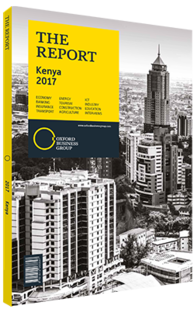Micro-insurance and mobile technology increase Kenya's health insurance penetration
As Kenya looks to improve its health care financing environment, both the public and the private sector are turning to micro-insurance and mobile payment technologies to increase insurance penetration. The low level of health insurance in the market is one of the most significant challenges facing policymakers. According to a 2014 study by Kenya’s Insurance Regulatory Authority, only 7% of the population had any form of insurance. In terms of private health insurance, the figure was as low as 3%. This is at least in part to a result of how the economy is structured. The formal sector accounts for just 5% of Kenya’s population; therefore, traditional insurance schemes, which are often based on employment, struggle to penetrate the market. Consequently, inequality across the system prevails with the poorest members of society hit hardest by a lack of coverage. In 2013 the wealthiest quintile in Kenya had 41.5% health insurance coverage, while the poorest quintile had just 2.9%. This has a direct impact on access to care, particularly for more costly and complicated procedures. Indeed, while many Kenyans will pay out of pocket for outpatient care, lack of insurance has a significant effect on access to inpatient care. For example, Kenyans with insurance had an inpatient utilisation rate of 76 admissions per 1000 people, while the utilisation rate for the uninsured was around half that.
Potential
Given the massive untapped market of as many as 38.8m Kenyans, public and private players have been looking at ways of introducing micro-insurance to the market. The state-owned National Hospital Insurance Fund (NHIF), for example, recently announced plans to increase its coverage to include outpatient services and chronic disease coverage.
With premiums ranging from KSh150 ($1.46) to KSh1700 ($16.60) per month, the programme is competitive enough to rival private plans. Furthermore, with a maximum annual premium, including family privileges, of KSh20,400 ($199), the plan is substantially cheaper than those offered by major private insurers, in which a minimum annual premium for a family plan can cost upwards of KSh75,000 ($732).
However, this is not the first attempt to bring comprehensive low-cost insurance to the market. In 2012 Changamka Micro-Insurance, a local firm, in conjunction with British-American Insurance and Safaricom, introduced the Linda Jamii plan to the market. The scheme covered inpatient and outpatient care, eye, dental, and emergency care as well as payments for lost income. Payments were made using Safaricom’s mobile payment system, M-Pesa, with premiums starting at KSh6000 ($59) up to a full coverage option for KSh12,000 ($117). Changamka had plans to reach 35m Kenyans. However, the scheme was shuttered in 2015 with just 22,000 policyholders as a result of the insurance plan not requiring a medical test upon registration. It was therefore unable to control for risk and suffered from an adverse selection.
Technology Boost
Nevertheless, the use of mobile payment technology points the way forward for health insurance coverage in the country. In July 2015 Airtel Insurance was launched and based coverage on the amount of mobile airtime usage of its customers rather than premiums. Such innovative products are likely to become more common, as Kenya has a mobile penetration rate of 88%. Half of all Kenyans earning less than $2.50 per day still have access to a mobile phone, making mobile money technology a widespread practice. By the end of 2015 Kenya had 31.6m mobile money transfer subscriptions in a population of just over 45m. This led to transactions worth KSh2.8trn ($27.3bn), or the equivalent of 53% of the country’s GDP. Globally, the use of mobile payment technology for health care has been on the rise. From 2009 to 2014 the number of mobile-enabled health care products and services increased by 300%, while in sub-Saharan Africa almost three-quarters of insurers used mobile technologies to register clients. Despite initial setbacks, it would appear that Kenya will soon be following suit.
You have reached the limit of premium articles you can view for free.
Choose from the options below to purchase print or digital editions of our Reports. You can also purchase a website subscription giving you unlimited access to all of our Reports online for 12 months.
If you have already purchased this Report or have a website subscription, please login to continue.

